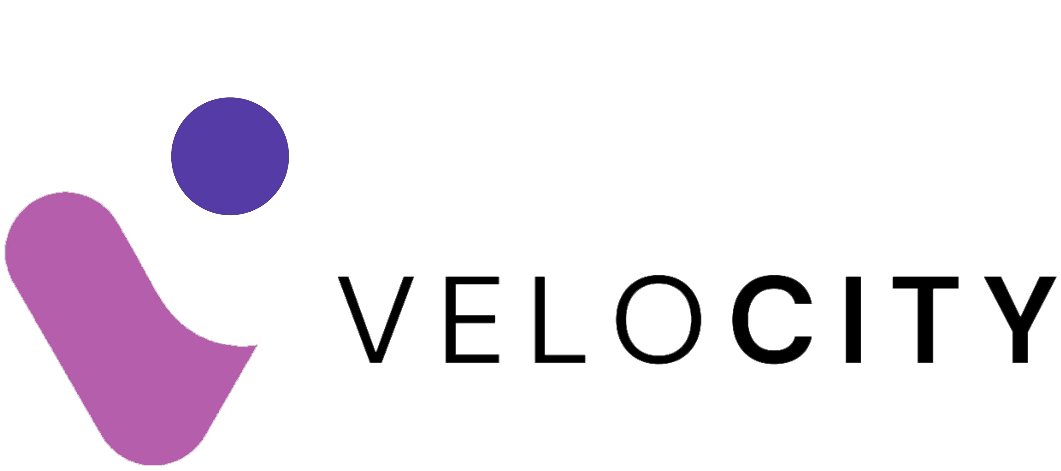Services List
Delivering a one-size-fits-all experience is no longer sufficient. Today’s consumers demand personalisation at every touchpoint, and businesses that fail to deliver risk losing relevance. Fortunately, artificial intelligence (AI) has transformed the way companies can engage with their audiences, enabling hyper-personalised experiences at scale.
This article provides a step-by-step guide to using AI for customer segmentation, predictive analytics, and tailored content delivery — key pillars for crafting exceptional customer journeys. Whether you're in higher education, real estate, retail, or professional services, the strategies outlined here are practical, scalable, and results-driven. As always, Velocity is here to help you bring these innovations to life.
-4.png?width=1750&height=875&name=Feature%20images%20velocity_%202500%20x%201500%20(1750%20x%20875%20px)-4.png)
Covered in this article
Why Hyper-Personalisation Matters
Step 1: Leverage AI for Advanced Customer Segmentation
Step 2: Predict Future Behaviours with AI-Powered Analytics
Step 3: Deliver Tailored Content at Scale
Step 4: Automate and Optimise the Customer Journey
Conclusion: Future-Proofing Your Customer Experience with AI
FAQs
Why Hyper-Personalisation Matters
Hyper-personalisation goes beyond addressing your customer by name. It involves using real-time data and AI to deliver content, offers, and experiences that are uniquely relevant to an individual’s preferences, behaviours, and needs.
Benefits include:
-
Improved engagement: Personalised messages are more likely to be opened, read, and acted upon.
-
Higher conversion rates: Tailored experiences lead to increased purchases and interactions.
-
Stronger loyalty: Customers who feel understood are more likely to remain loyal to your brand.
-
Optimised marketing ROI: Resources are used more effectively, reducing waste and increasing performance.
Step 1: Leverage AI for Advanced Customer Segmentation
Traditional segmentation relies on static factors such as age, gender, or location. AI enables dynamic segmentation based on behavioural, contextual, and psychographic data.
How to implement:
-
Integrate customer data from your CRM, website analytics, social media, and email platforms.
-
Use machine learning algorithms to identify patterns, such as purchasing frequency, on-site behaviour, or content preferences.
-
Segment audiences based on real-time behaviours (e.g., active users vs. lapsed users) and lifecycle stages.
Tools such as HubSpot’s Smart Lists and predictive lead scoring capabilities are particularly useful for this stage. Velocity’s marketing automation team can assist with setting these up to match your growth goals.
Step 2: Predict Future Behaviours with AI-Powered Analytics
Predictive analytics empowers businesses to anticipate what a customer is likely to do next — from abandoning a cart to upgrading a service plan.
Key applications AI-Powered Analytics:
-
Churn prediction: Identify at-risk customers and proactively re-engage them.
-
Product recommendations: Suggest relevant products or services based on purchase history and browsing data.
-
Next-best action modelling: Determine the most effective message or channel to use next.
Getting started with AI-Powered Analytics:
-
Deploy tools like HubSpot’s Lead Scoring with AI to prioritise contacts.
-
Use platforms such as Google Cloud AI or IBM Watson for deeper analysis.
-
Incorporate predictive models into your CRM to trigger timely marketing or sales actions.
Velocity’s CRM and data specialists can help integrate these systems, ensuring a seamless data flow and actionable insights.
Step 3: Deliver Tailored Content at Scale
With segmented audiences and behavioural insights in place, it’s time to serve personalised content across channels.
Channels for delivery:
-
Email marketing: Send dynamic emails that adapt content based on recipient attributes.
-
Web personalisation: Use tools like HubSpot Smart Content to display relevant messages to different users.
-
Chatbots and live chat: Implement AI-driven conversations that adjust to user context.
-
Social media: Serve ads and organic content tailored to user interests and interactions.
Best practices:
-
Create modular content blocks that can be recombined for different personas.
-
Use conditional logic and dynamic fields in your CMS and email tools.
-
Continuously A/B test content and optimise based on performance data.
Velocity offers content strategy and campaign execution services that align perfectly with these personalisation efforts, ensuring your messaging resonates with every customer segment.
Step 4: Automate and Optimise the Customer Journey
Hyper-personalisation doesn’t stop after one interaction. AI can power the entire customer journey — from awareness to advocacy — with continuous optimisation.
How to automate effectively:
-
Set up AI-driven workflows that adjust in real-time to customer behaviour.
-
Use multi-step forms and conditional logic to gather data and tailor journeys without friction.
-
Monitor engagement analytics and refine journeys to maximise outcomes.
Tools such as HubSpot’s Campaign ROI reporting, Lead Score performance dashboards, and Content Remix for repurposing assets enable continual refinement of your strategy.
Velocity’s marketing automation experts can audit and re-engineer your workflows for maximum efficiency and effectiveness.
Conclusion: Future-Proofing Your Customer Experience with AI
Hyper-personalisation is not a trend — it's a fundamental shift in how businesses must operate to meet modern expectations. AI offers the intelligence, scalability, and agility needed to deliver meaningful, data-driven experiences that convert.
By investing in AI-powered segmentation, predictive analytics, and content delivery, you not only improve customer satisfaction but also position your business for long-term growth. Contact Velocity today about implementing AI into your business.
FAQs
1. What is hyper-personalisation in marketing?
Hyper-personalisation uses AI and real-time data to deliver highly tailored customer experiences across various channels, far beyond basic segmentation.
2. How does AI improve customer segmentation?
AI analyses behavioural and contextual data to dynamically group customers, enabling marketers to target users with greater precision and relevance.
3. What is predictive analytics and how is it used in personalisation?
Predictive analytics uses historical and real-time data to forecast customer behaviour, allowing businesses to anticipate needs and deliver timely offers.
4. Which tools can I use for AI-powered personalisation?
Tools such as HubSpot, Google Cloud AI, and IBM Watson provide capabilities for smart segmentation, predictive scoring, and content personalisation at scale.
5. Can small businesses benefit from AI-driven personalisation?
Yes, even small businesses can leverage AI through platforms like HubSpot to automate tasks, personalise outreach, and enhance customer engagement.
6. How can Velocity help my business with AI personalisation?
Velocity offers strategy, integration, and execution services to implement AI-driven customer journeys — from CRM setup to content delivery optimisation.




